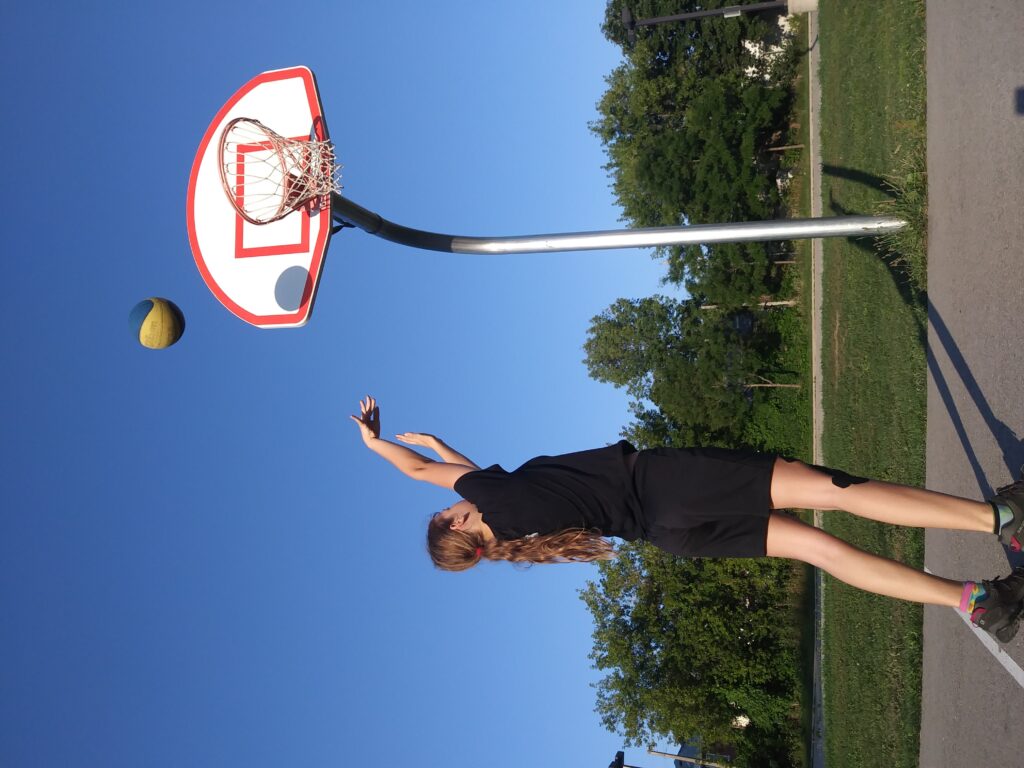by Jeff Kittmer RMT
Have you ever felt pain at the base of your knee while jumping or ascending stairs? Or jumping on hard surfaces like a gymnasium or a parquet floor? Athletes who train and compete in sports that require repetitive jumping or decelerating quickly from high speeds commonly experience this type of knee pain. I see this quite often with the volleyball players who visit my clinic. This condition is called “Jumper’s Knee”, also known by its fancier name: Patellar Tendinopathy.
What is Jumper’s Knee?
The patellar tendon is a part of the quadricep muscle that runs down the front of your thigh. The tendon runs downward, surrounds your knee cap, and attaches to the tibia. Jumper’s Knee is a result of repetitive micro tears of the patellar tendon. These tears occur while jumping on hard surfaces and performing sudden stop and go movements. For example, a volleyball player jumping up and down on a hard floor every day may experience mini-traumas to the patellar tendon that eventually cause painful knee symptoms.
Typically, jumper’s knee is caused by one or several of these factors:
- Repeated overuse of the patellar tendon through athletic activity
- Not allowing enough time for the patellar tendon to recover between workouts
- A weakened vastus medialis muscle (the inner quad muscle that helps to keep the kneecap tracking correctly)
- Poor foot biomechanics (fallen arches) and worn out footwear
Symptoms of Jumper’s Knee
If the initial signs and symptoms are ignored (swelling and mild inflammation), the acute injury can develop into a chronic condition. These are the symptoms that you may experience:
- Sharp, throbbing pain beneath the kneecap while working out or competing. Pain may worsen with athletic activity and be relieved with rest. Pain will increase with kicking, jumping, and running since these actions activate the patellar tendon.
- Swelling of the joint. Athletes may notice that their knee looks swollen and experience a reduced range of motion.
- Tenderness when pressure is applied to the bottom of the patella.
- Discomfort during daily activities. Pain may be experienced while kicking, climbing stairs, or bending over. The patellar tendon extends the knee to straighten the leg. Athletes with advanced cases of patellar tendinopathy may find that their knee pain increases with daily activities.
Athletes may find that they can still compete during the early stages of tendinopathy. Though this may be possible and tempting. It is advisable to rest and seek medical evaluation prior to returning to the physical stresses of training and competition. Continuing to compete or practice can worsen the problem and cause it to become a chronic condition.
Treatment of Jumper’s Knee
The aim for treating Patellar tendinopathy is to reduce pain, lengthen the quadricep muscles, and gradually increase the load tolerance through the knee.
Taping Jumper’s Knee
To decrease the pain* during your recovery, the following taping pattern can assist in relieving the tension on the patellar tendon.
- With the knee bent at 90 degrees, measure and apply a piece of tape from the bump below the kneecap on the shin, (tibial tuberosity) and wrap it around the outside of the kneecap and slightly across the midline of the thigh above the knee. Tape off tension.
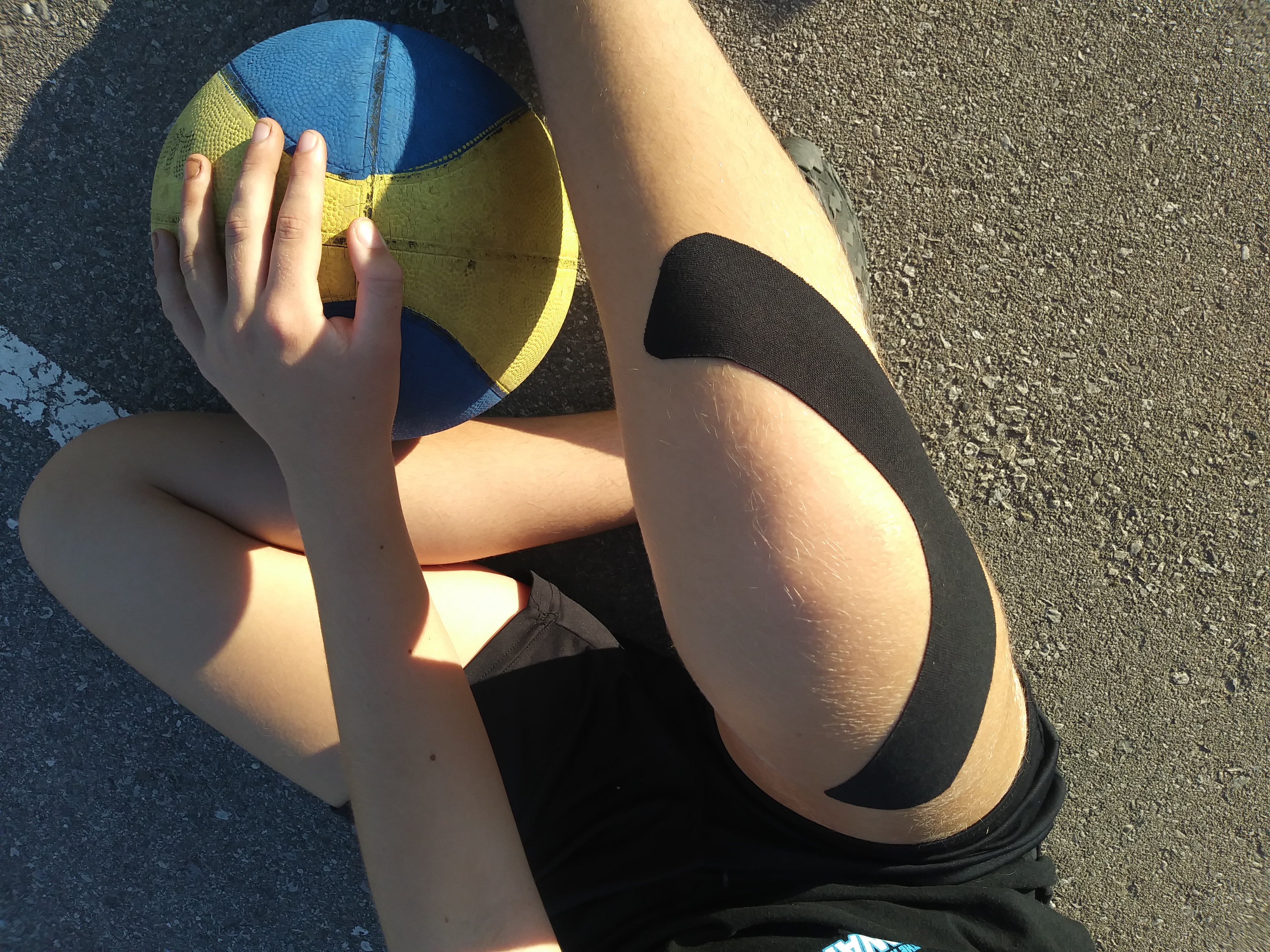
- Then measure and apply a second strip, from the tibial tuberosity, and wrap it around the inside of the kneecap and across the top of the knee overlapping the first strip. Ensure that the anchor of the second strip is adhered to skin and doesn’t stop on top of the first strip.
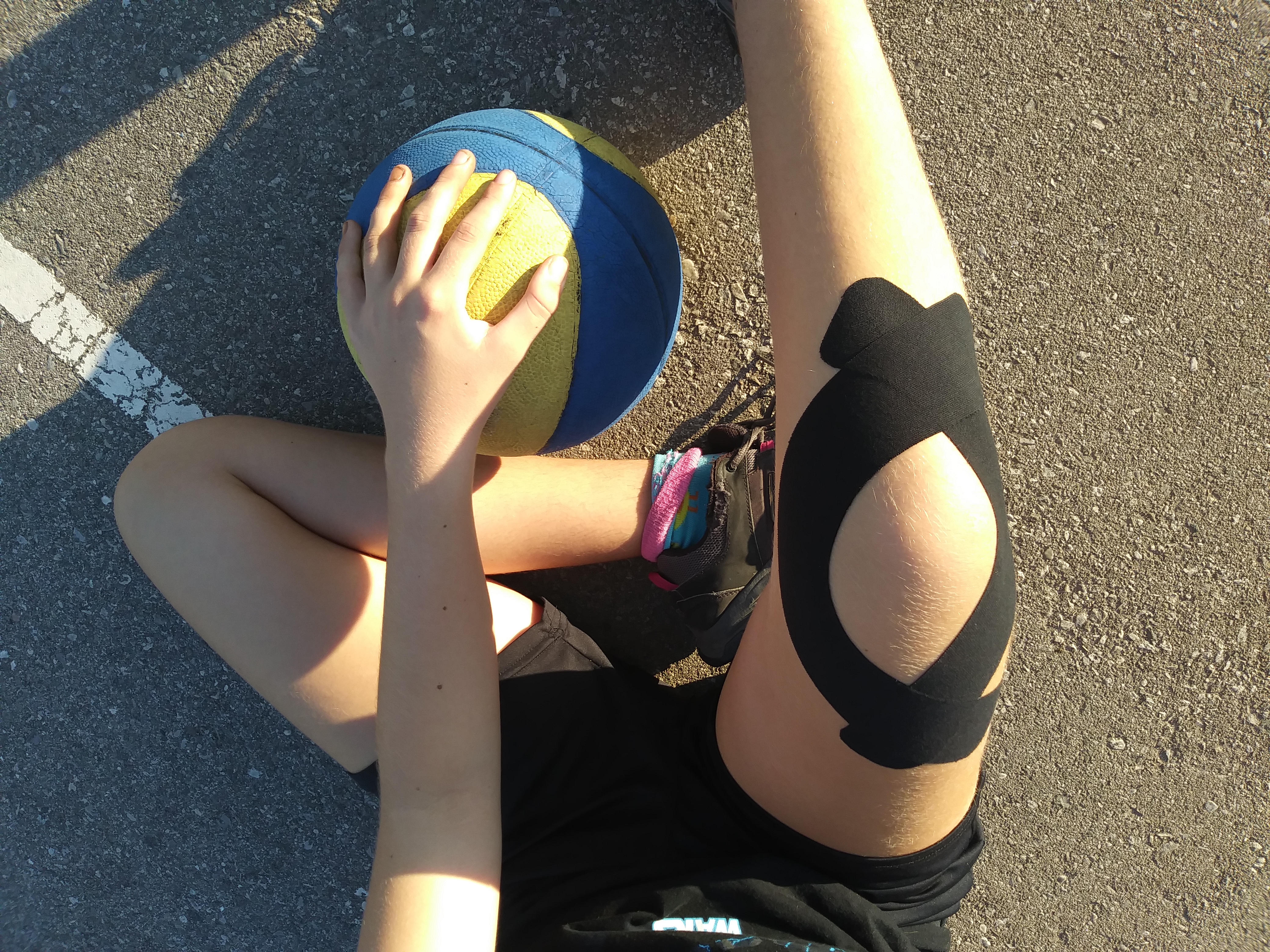
- For the final piece of tape, make a strip that reaches from the outside of the knee horizontally across to the inside of the knee. This will be applied above the tibial tuberosity and below the kneecap. Apply an anchor with paper off tension on the outside of the knee, apply a 25% stretch to the tape, laying it across the patellar tendon, then apply the final anchor with paper off tension.
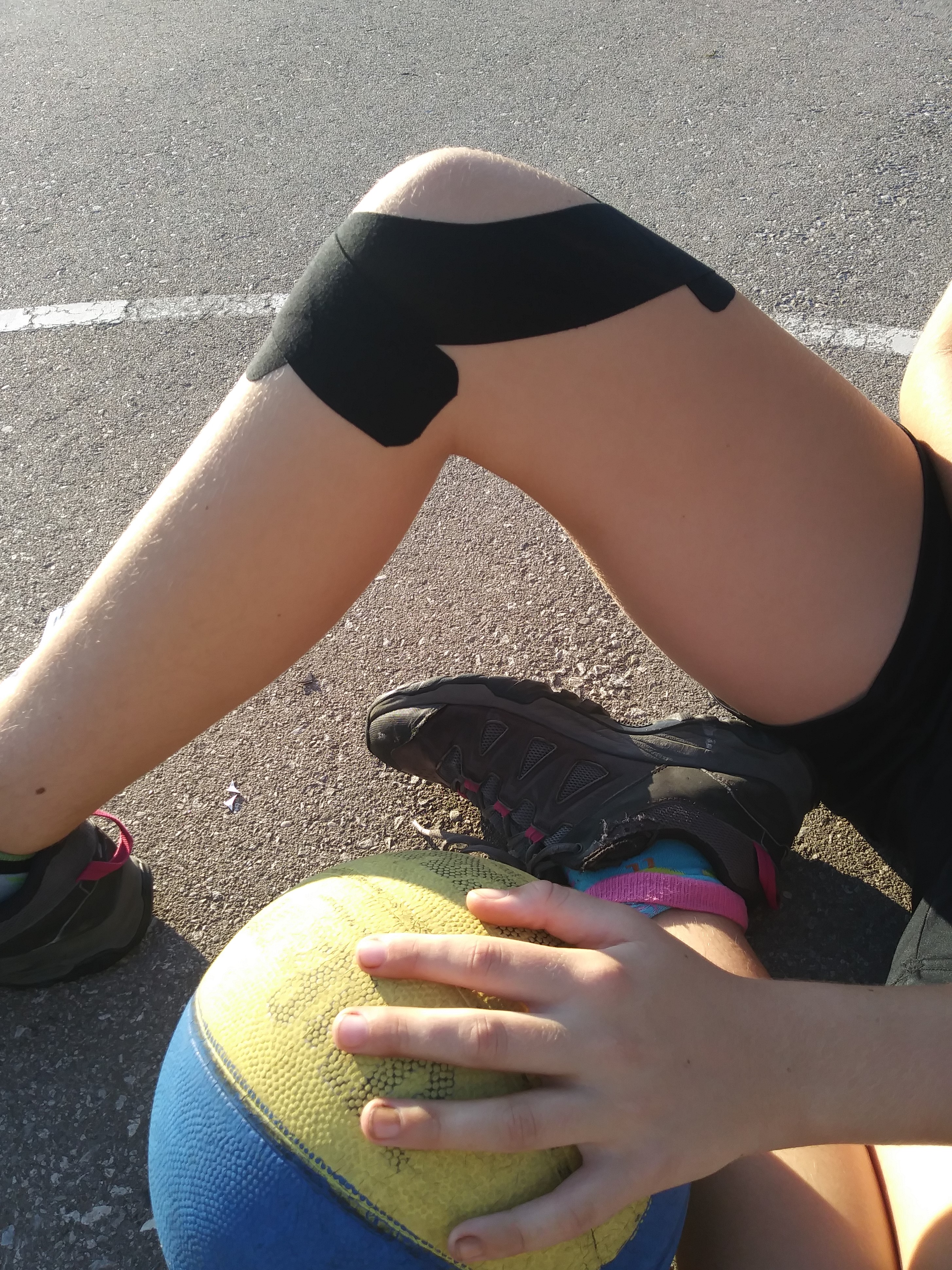
The compression on the tendon will redirect the angle of pull between the tendon and the patella, reducing the strain on the painful area. The strips around the knee will help with the knee’s tracking; especially if the Vastus Medialis is weak.
Massage Therapy
The repetitive nature of kicking, jumping, and running causes wear and tear on the patellar tendon as the knee bends and straightens. This movement creates micro tears within the tendon contributing to the pain. When the tears heal, they create scar tissue that reduces the pliability of the tendon and decreases the knee’s range of motion. Cross-fiber frictions are a massage therapy technique designed to break down the scar tissue, soften the patellar tendon, and realign the fibers within the tendon. Allowing the knee to track and glide with more ease. A massage therapist with a sports massage background or an athletic therapist will be able to assist you with this, as well as address the tension within your quads.
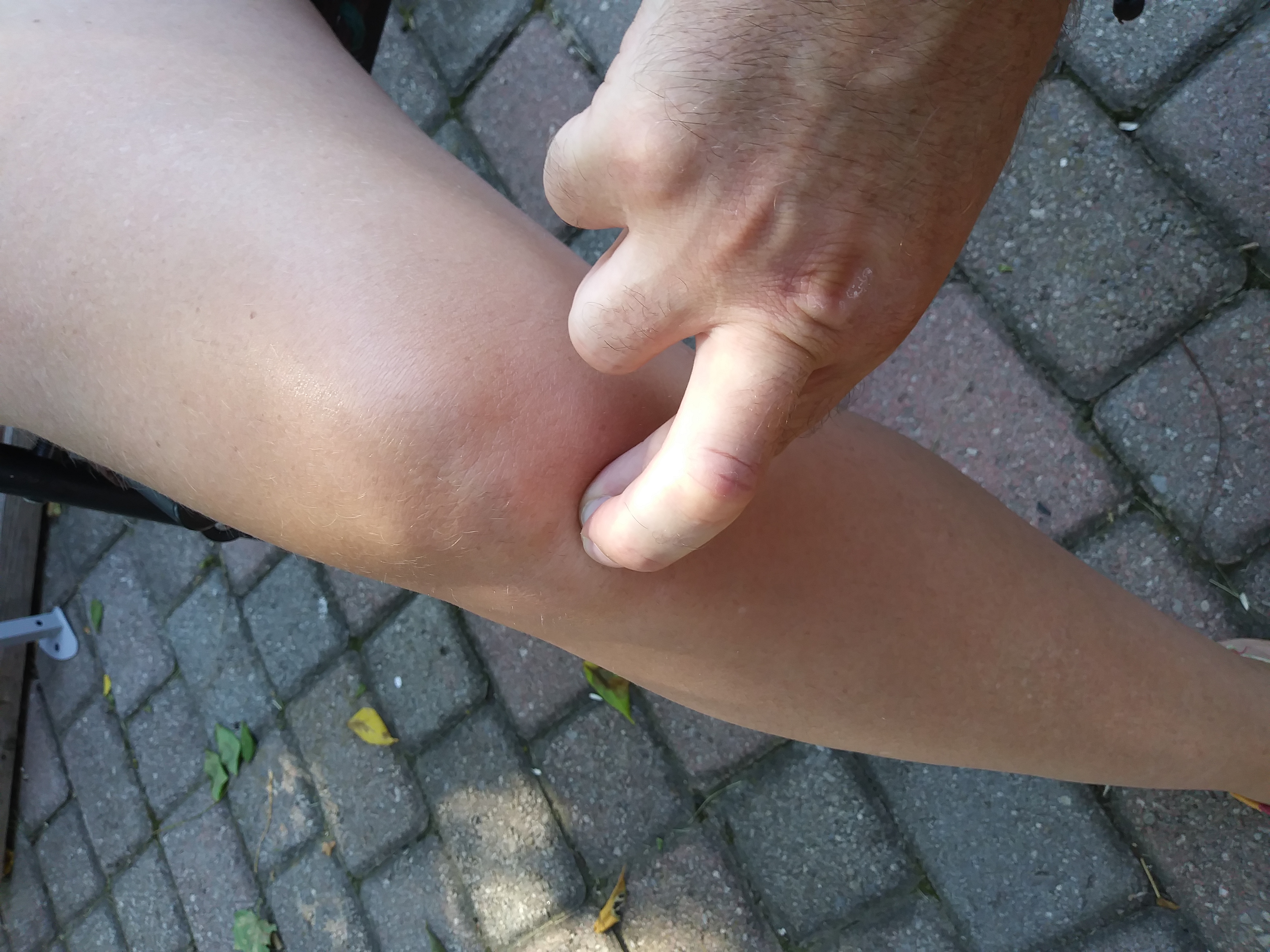
Knee pain is not a symptom that you want to push through or to ignore. Knee pain is a sign that something is imbalanced and should be addressed before it becomes a chronic issue. Through massage and taping, you will find that you will have better support and pain relief during your recovery and rehab. During episode two, I will highlight key strengthening and stretching exercises that will help you get back on court and reach new heights with your training and competitions.
Click here to find a RockDoc in your area!
Click here to shop RockTape!
